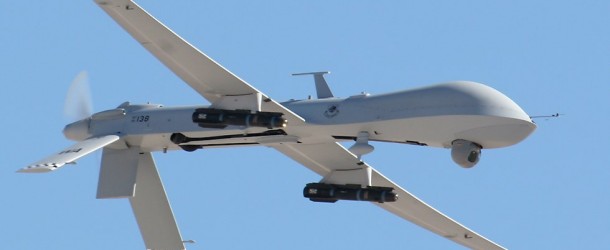How has one new technology come to be ostracized so thoroughly?
Unmanned aerial vehicles (UAVs), more commonly known as drones, are now just as globalized as products like the MacDonald’s quarter pounder or Apple’s iPhone. The international market for the technology is booming, and countries looking for self-sufficiency are designing their own models-the U.S. has the Predator, Turkey has the Anka, and Israel has the Heron. Even the UN has announced that it will use them to oversee operations in the Congo.
For all of drones’ ubiquity, they hold none of the appeal of other similar advances in military or transportation technology. Disney rolls out lovable talking Planes, and kids still light up when they unwrap action figures, revamped GI Joes, or anything involving camouflage. The geekiest science whizzes are drooling over the possibilities of building personal drones or using them as high-tech garbage disposals. Hollywood has taken initial steps to embrace drones by both featuring them (albeit in a limited fashion) in action films and lobbying to use them in production. Yet ask most people, and they’ll still tell you they have nothing good to say about drones.
In all ways, drones are other worldly—robots with no human component, whirring around in the ether high above humanity, agenda, capabilities, stored information all unknown to those who pass below. They are impersonal, raw, pieces of metal that present incalculable possibilities to be used for good, or, as most believe, for evil. While they have been in existence and been used by the military since at least the 1930s, they remain outside of our collective sphere of understanding in a cultural sense. We have not found a way to harmonize their otherworldly aspects with a collective story of their impact and interaction with ourselves. The fact that this is a missed opportunity is exacerbated in UAVs’ very sobriquet: one of the reasons the moniker “drone,” or male honeybee, was chosen, was as a reference to the aircraft’s tether to an operator on the ground. The male needs its female to carry out its functions and purpose. For every black box gliding surreptitiously above the clouds, there’s a human whose mind and spirit leads the flight path, preventing a rogue drone, and reducing the flyers to another toy in our arsenal of gadgetry.
We should dare to appropriate the foreign and conceptualize it in terms that are meaningful and intelligible on a cultural level, if for no other reason than to re-write a story that has long been guarded by military and political elite and parceled out to the public via short and scary news articles chronicling drone attacks in the deserts of Yemen. My PSA for drones in pop culture is not unique; other media outlets have documented drone art installations, drone analogies in Pakistani pop songs, and a few select short stories that evoke visceral reactions to the fears of drones. Whatever form of art speaks to you, think about finding ways to put a name and face to the unknown. Unmask the sleek, mechanical, ominous surveillance with words, or song, or paint. For like it or lump it, the globalization of drone technology has already descended, and it will not wait for our cultural receptors to catch up.
Leslie ESBROOK
























































